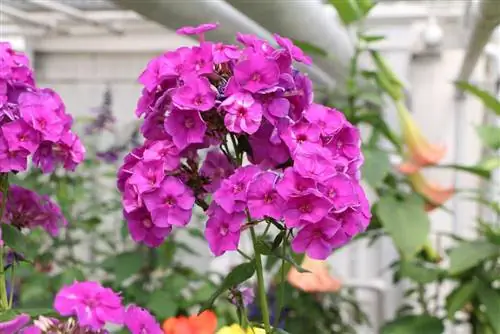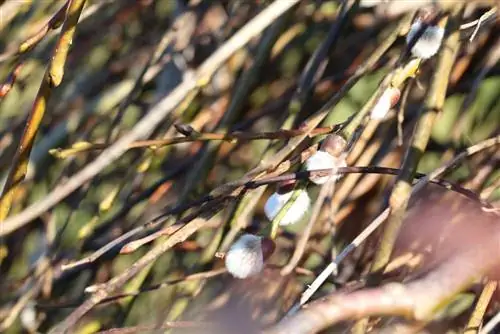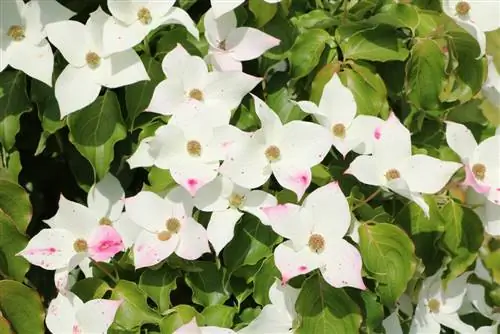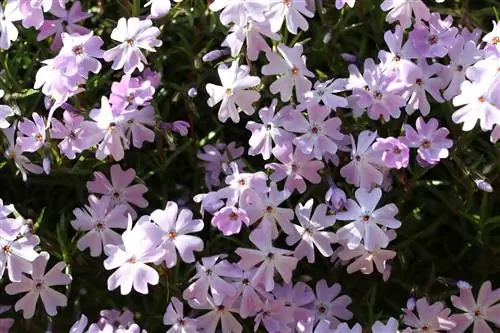- Author admin [email protected].
- Public 2023-12-17 03:39.
- Last modified 2025-01-24 12:45.
A garden that blooms from spring to autumn is guaranteed when phlox, also known as phlox, is cultivated. The many different species provide the hobby gardener with a large, colorful variety of colors. The hardy perennials are perennial and therefore well suited for long-term planting in the garden.
The graceful phlox are also called flame flowers, but are better known by their Latin name among hobby gardeners. The variety of species also offers a great variety of flowers and colors in all imaginable sizes and colors. If you want to transform your garden into a sea of flowers from spring to autumn and don't want to change this every year, you should cultivate perennials in your garden. Phlox is the ideal flowering plant for those who cannot invest a lot of time in care.
Location
Since phlox prefers sunny to partially shaded locations, it is well suited for free garden beds as well as on a house wall or fence that faces east, west or south. It is therefore a plant that can be planted almost anywhere in the garden. But it should be noted that the perennial requires space and does not like to be surrounded and crowded by other plants. It is sufficient if four phlox are planted in one square meter. When it comes to soil conditions, the following should be taken into account:
- nutrient-rich and, if possible, clay-rich
- Prepare the soil with compost before planting
- Sandy soils in particular need a lot of compost, mulch and moisture
- rooted or heavily compacted soils must be loosened
Tip:
If several perennials are put together, they will grow together into one unit if they are given enough space. The plants later look like one and not like individual plants, are easy to care for and, with their different flower sizes and colors, are an enrichment for every garden.
Plants
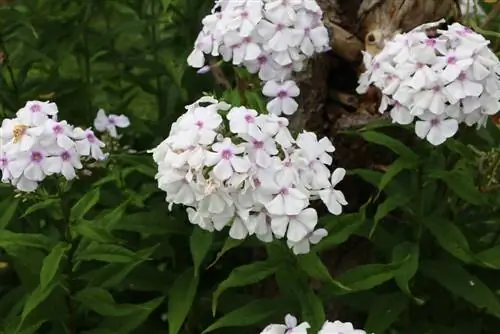
The best time to plant phlox is autumn. The soil must be prepared beforehand for planting. Mature compost should be incorporated here early on before the planting holes for the perennials are dug again later. Especially with sandy soils, it is important that they are well prepared with compost, mulch and plenty of water some time before planting. If several perennials are planted in one bed, the result is that over time they will combine into one unit. However, it is important to ensure that there is enough distance between the individual phlox, otherwise they will disturb each other in the long term. When planting, you should therefore proceed as follows:
- Planting distance of 60 to 80 cm should be maintained
- the rule of thumb is, four plants are cultivated per square meter
- so they grow densely, but do not take light and nutrients from each other
- However, the dense growth has the advantage that moisture is stored in the soil
- It doesn't need to be watered as often because the leaves provide shade to the ground
- plant different types of early and late flowering phlox together in a group
- This ensures continuous flowering from early spring to late autumn at every location
- The phlox are usually obtained by division
- cut the upper shoots to a hand's width
- If they are late-flowering phlox, they can also be used with long shoots and leaves
- Phlox from the trade are already prepared for planting
- dig holes big enough for planting
- insert the perennials individually and press the soil down well
- water well
- In the immediate period after planting, the phlox needs significantly more water
- Give mulch over the soil for the winter
Propagate by division
The phlox, like most perennial plants, are propagated by division. If you have already cultivated the beautiful plants in one place in your garden, you can plant them in many new places in the garden in autumn. The phlox should be divided every three to five years. This prevents them from growing too densely and possibly competing with each other for light and nutrients. When dividing, attention should be paid to the following points:
- Carefully dig the perennial out of the ground in autumn
- remove all woody parts from the center of the perennial
- on this occasion the old planting hole can be supplied with compost again
- divide the perennial in the middle of the root with a sharp knife
- disinfect the knife before use so that no bacteria can get into the divided plants
- replace part of the perennial in the old planting hole
- cultivate the other part in the new, already prepared location
Tip:
If there is no more space in your own garden for new perennials gained through division, your neighbor might be happy.
Propagate by cuttings
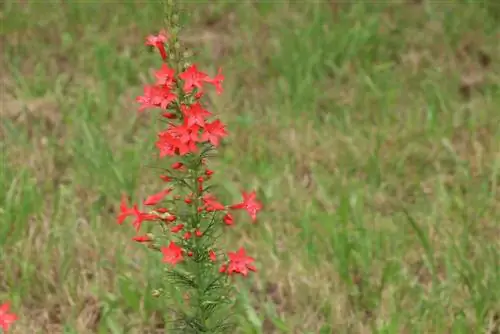
If the phlox is propagated through cuttings, the mother plant can continue to grow unhindered and become larger and more lush than is the case when divided. Especially in years when dividing existing plants is not recommended, the population can be significantly increased using cuttings:
- use stems that do not have flower buds for the cuttings
- cut this to seven to ten centimeters
- remove the leaves at the bottom two to five centimeters
- put in water
- a sunny location is ideal for root formation
- make sure that there is always enough water available, this can quickly evaporate in the sun
- the first roots appear, plant perennials individually in pots with nutrient-rich soil
- the soil can be taken from the garden
- nutrient-rich potting soil from the market is also recommended
- If the perennials are large enough, they can be planted in the appropriate location in the fall as usual
Tip:
If the cuttings were cut late in the summer, it is better to wait until next spring before planting so that the tender plants and roots are not damaged in a frosty winter.
Cutting
In the fall, after flowering, the perennials can be cut back to hand height if they were grown in a mild climate. However, in areas with severe frost, this radical cut should be avoided so that the winter-hardy phlox is not damaged. Because the old shoots also provide good winter protection. In this case, pruning is not done until spring. Plants that bloom late should be given the opportunity to draw nutrients into the dead stems. Therefore, when cutting phlox, the rule of thumb is that you should only use scissors when all parts of the plant are dead and dry. Otherwise, the following should be taken into account when cutting:
- early flowering phlox so cut back in autumn
- prune late-blooming perennials just before new growth in spring
- remove dried flowers over the summer and in the fall
- otherwise the perennial could multiply unhindered by producing seeds
Tip:
If part of the flower stalks are cut again by about a third in early spring shortly before the first buds form, the flowering time can be extended. Because the flowers appear a little later on the cut stems than on the left stems.
Diseases and pests
Mildew is common on phlox. The best way to prevent this is to plant resistant cultivars. It is also important that the earth never dries out. It's best to mulch, then it can retain moisture for longer and doesn't dry out quickly. It is also important to fertilize the plants correctly. They don't like a lot of nitrogen. Otherwise it can happen that the cells become too fattening. They are then less resilient. Infected plant parts must not be disposed of in the compost, otherwise the fungus can spread.
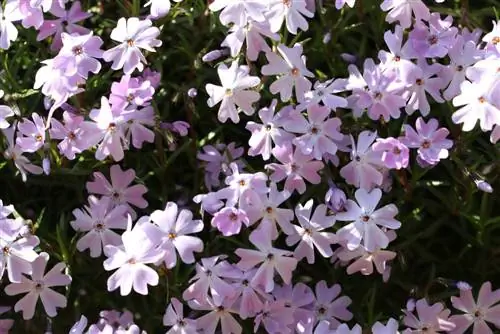
If stunted leaves or twisted stems appear, this indicates an infestation with the small, so-called alpine plants. Infected shoots must be immediately cut down to the rootstock. They also definitely don’t belong in the compost. The little elves hibernate at the base of the stems.
Conclusion
Phlox are particularly suitable for hobby gardeners who don't want to or can't put a lot of time into caring for their garden. The long-flowering perennials are an enrichment, especially in large gardens. They are hardy and perennial, planting and propagating are easy. Once planted, the phlox requires little care and still offers the viewer a colorful variety of flowers. This means you only need to invest a little time in planting and planning the locations. If the garden has been designed optimally, there will no longer be any place where flowers will not bloom from early spring until well into autumn.

